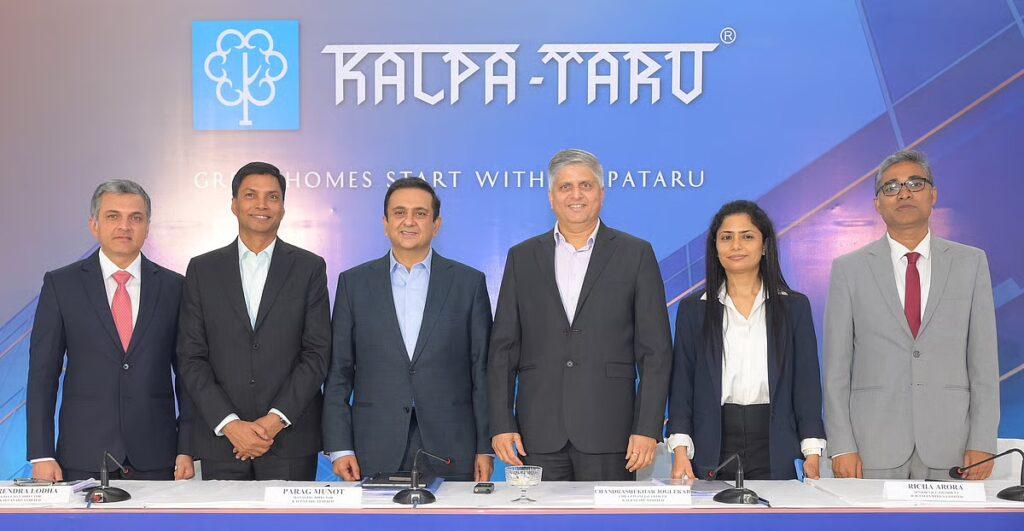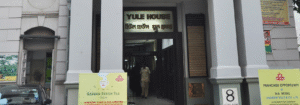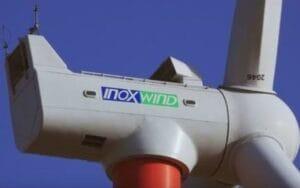1. At a Glance
Kalpataru, Mumbai’s 5th largest developer in the MCGM area, just posted a Q1 FY26 loss of ₹56 crore despite an 83% jump in pre-sales to ₹1,249 crore. Collections hit ₹1,249 crore, net debt was trimmed to ₹7,939 crore, but operating margins slipped into the red (-6%). The company’s IPO in July 2025 raised ₹1,590 crore for debt repayment and general corporate use — and it needs every rupee, because this is still a capital-heavy, slow-cash-cycle game.
2. Introduction
Founded in 1988, Kalpataru has been a familiar name in Mumbai real estate, known for large-scale residential towers, integrated townships, and redevelopment projects. Over the years, it’s delivered 120 projects totalling ~26 million sq ft, and now manages a development pipeline of ~41 million sq ft across 25 ongoing, 6 forthcoming, and 5 planned projects.
The company’s playbook is a mix ofintegrated model(land to sales in-house) andasset-lightstrategies (redevelopment, JDAs, JVs). In Mumbai’s land-scarce environment, it’s leaning more towards the latter for scalability without burning as much cash upfront. But even with that mix, the sector’s notorious working capital cycles and interest costs mean profitability can be as patchy as construction timelines in monsoon season.
3. Business Model (WTF Do They Even Do?)
Kalpataru is in thebuild, sell, repeatbusiness, diversified across:
- Luxury, premium, mid-income housing(core segment, 95%+ of developable area)
- Commercial offices(lease or sale)
- Retail malls(e.g., Korum Mall)
- Integrated townships & gated communities
- Redevelopment projects(especially in Mumbai)
The residential-heavy focus means sales are driven by consumer demand, pricing trends, and mortgage affordability. The annuity assets (retail/office leases) add stability, but at 5% of area, they’re a side dish, not the main course.
4. Financials Overview – Q1 FY26 vs Q1 FY25 & Q4 FY25
| Metric | Latest Qtr (Q1 FY26) | YoY Qtr (Q1 FY25) | Prev Qtr (Q4 FY25) | YoY % | QoQ % |
|---|---|---|---|---|---|
| Revenue (₹ Cr) | 443 | 530 | 597 | -16.4% | -25.8% |
| EBITDA (₹ Cr) | -28 | 3 | -20 | N.A. | N.A. |
| PAT (₹ Cr) | -56 | -0.05 | 20 | N.A. | N.A. |
| EPS (₹) | -2.40 | -0.00 | 0.84 | N.A. | N.A. |
Commentary:
- Revenue fell YoY and sharply QoQ, likely due to project stage and recognition methods.
- Negative EBITDA shows cost overruns/low revenue absorption this quarter.
- Other income is a lifeline (₹14 crore) — without it, the loss would be worse.
5. Valuation (Fair Value Range Only)
Method 1 – P/E
- EPS (TTM) = ₹1.29
- Sector P/E average (Lodha, DLF, Godrej) ~ 40x
- FV range = ₹50 – ₹60 (loss volatility makes this unreliable).
Method 2 – P/B
- Book Value est. ~₹183/share
- Sector P/B ~ 2–4x
- FV range = ₹366 – ₹732.
Method 3 – NAV-based (simplified)
- Based on land bank & project pipeline cashflows discounted at 12%, FV ~ ₹350 – ₹450.
Educational FV Range:₹350 – ₹450Disclaimer: This FV range is for educational purposes only and is not investment advice.




















